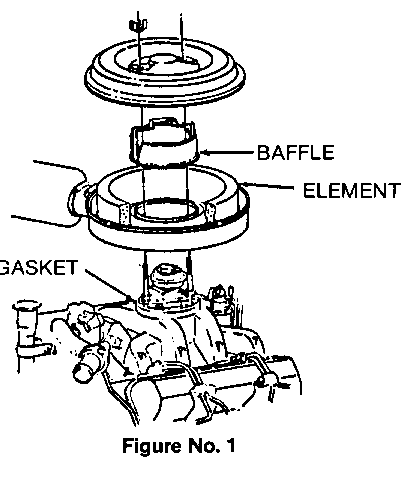DIESEL CARBON DEPOSITS AIR CLEANER BAFFLE INFORMATION

MODELS: 1982 LIGHT DUTY TRUCKS WITH 6.2L DIESEL ENGINE RPO LH6 (L.D. EMISSIONS)
Build up of soot (carbon) or contamination of the air filter element is a result of exhaust gases emitted from the EGR valve.
During normal operation of the EGR valve, some soot will occur in the intake manifold below the EGR valve. A soot deposit will also occur on the inner surface of the air cleaner element and housing. This is normal. The air filter element air flow will not be affected, and should last the specified change interval.
Should soot build-up be excessive, and/or evidence of filter deterioration occurring, the following may have occurred:
1. Malfunction of the EGR system (evidenced by excessive black exhaust).
2. Malfunction or setting of the TPS (throttle position switch). Refer to Service Manual.
3. Mode of vehicle operation. If the vehicle is idled for long periods, or long downhill operation with closed throttle, the build-up may be excessive.
To direct the EGR exhaust gas directly into the intake manifold, a baffle, P/N 25042774, has been released for service. The installation of this baffle will prevent the sooting of the filter element. Malfunctions or improper settings of the EGR/TPS system will still cause excessive black smoke and poor performance. Conditions in these areas should be corrected promptly.
To install this baffle, refer to the sketch below and the following steps:
1. Remove air filter housing from engine. (Disconnect EGR hose at EGR valve and at solenoid.)
2. Clean housing and cover.
3. Inspect air cleaner gasket on manifold. If it is torn or missing, install a new gasket.
4. Install air cleaner housing.
5. Replace element if required.
6. Install baffle and element. Assure proper seating of both. (Attach vacuum hose to EGR valve and solenoid.)
7. Install cover and tighten wing nuts.

General Motors bulletins are intended for use by professional technicians, not a "do-it-yourselfer". They are written to inform those technicians of conditions that may occur on some vehicles, or to provide information that could assist in the proper service of a vehicle. Properly trained technicians have the equipment, tools, safety instructions and know-how to do a job properly and safely. If a condition is described, do not assume that the bulletin applies to your vehicle, or that your vehicle will have that condition. See a General Motors dealer servicing your brand of General Motors vehicle for information on whether your vehicle may benefit from the information.
